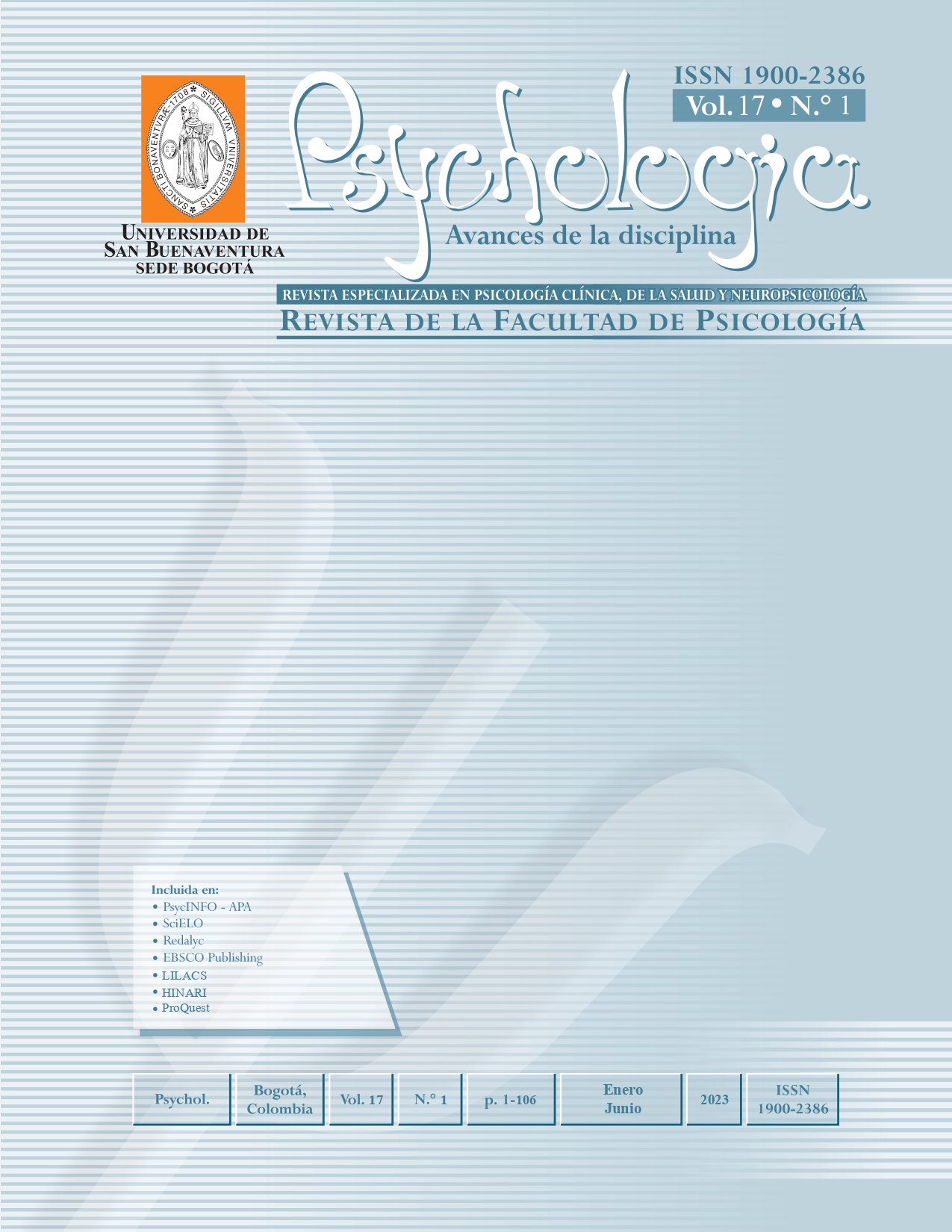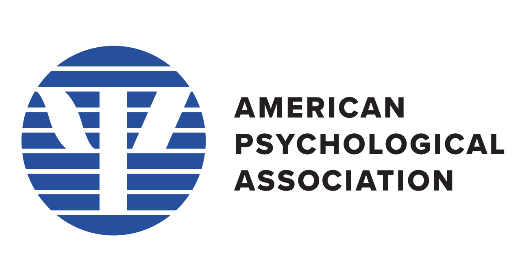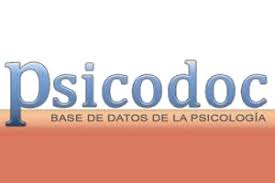Esta revista proporciona un acceso abierto inmediato a su contenido, basado en el principio de que ofrecer al público un acceso libre a las investigaciones ayuda a un mayor intercambio global de conocimiento.
Por tanto se acoge a la Licencia Creative Commons 4.0 Atribuciones Reconocimiento – NoComercial – CompartirIgual (by-nc-sa): No se permite un uso comercial de la obra original ni de las posibles obras derivadas, la distribución de las cuales se debe hacer con una licencia igual a la que regula la obra original.
http://creativecommons.org/licenses/by-nc-sa/4.0/
Resumen
El trastorno de conducta grave es un notable problema social y de salud mental en población infantil y adolescente. Aquí se presentan los resultados de una investigación cuantitativa de nivel descriptivo, que tuvo como objetivo general realizar una caracterización de la agresividad en un grupo de adolescentes con este tipo de trastorno. El estudio se desarrolló con jóvenes de un centro de internamiento preventivo que se encontraban en proceso de judicialización, aún no sancionados, pero privados de la libertad. Se seleccionaron por conveniencia 115 hombres, a los que se les aplicaron cinco instrumentos de medición: el Inventario de Motivos para la Agresión, el Inventario de Situaciones y Comportamientos Agresivos, el Cuestionario de Agresión de Buss-Perry, el Cuestionario de Agresividad Proactiva y Reactiva, y la Escala de Agresividad Apetitiva. El principal motivo para la agresión era conseguir algo que querían, eran agresivos sin que hubiese algún motivo, expresaban frecuentemente su ira, amenazaban a personas conocidas, se enojaban cuando tenían desacuerdos, creían que los demás se burlaban de ellos a sus espaldas, se sentían bien después de agredir física o verbalmente a alguien, portaban armas para usarlas en peleas y consideraban que pelear era lo único que querían hacer en la vida.
Palabras clave:
Referencias
Agnew, R. (1985). A revised strain theory of delinquency. Social Forces, 64(1), 151-167.
American Psychiatric Association. (2013). The Diagnostic and Statistical Manual of Mental Disorders (5th ed.). American Psychiatric Association
Bird, J. C., Fergusson, E. C., Kirkham, M., Shearn, C., Teale, A. L., Carr, L., Stratford, H. J., James, A. C., Waite, F., & Freeman, D. (2021). Paranoia in patients attending child and adolescent mental health services. The Australian and New Zealand journal of psychiatry, 55(12), 1166-1177. https://doi.org/10.1177/0004867420981416
Bozsik, C., Körmendi, A., Inántsy-Pap, J., Pataky, N., Gádoros, J., & Halász, J. (2013). A reaktiv/proaktiv agresszió, a rideg/érzéketlen vonások és a viselkedési problémák kapcsolata magyar serdülőknél [The relationship between reactive/proactive aggression, callous/unemotional traits and behavioural problems in Hungarian adolescents]. Psychiatria Hungarica: A Magyar Pszichiatriai Tarsasag tudomanyos folyoirata, 28(1), 48-56.
Bushman, B. J., & Anderson, C. A. (2001). Is it time to pull the plug on the hostile versus instrumental aggression dichotomy? Psychological Review, 108(1), 273-279. https://doi.org/10.1037/0033-295x.108.1.273
Bushman, B. J., & Huesmann, L. R. (2010). Aggression. En: S. T. Fiske, D. T. Gilbert, & G. Lindzey (Eds.), Handbook of Social Psychology, Vol. 2 (pp. 833-863). John Wiley & Sons.
Cornell, D. G., Peterson, C. S., & Richards, H. (1999). Anger as a predictor of aggression among incarcerated adolescents. Journal of Consulting and Clinical Psychology, 67(1), 108-115. https://doi.org/10.1037/0022-006X.67.1.108
Dodge, K. A., & Coie, J. D. (1987). Social-information-processing factors in reactive and proactive aggression in children's peer groups. Journal of Personality and Social Psychology, 53(6), 1146-1158. https://doi.org/10.1037//0022-3514.53.6.1146
Euler, F., Steinlin, C., & Stadler, C. (2017). Distinct profiles of reactive and proactive aggression in adolescents: associations with cognitive and affective empathy. Child and adolescent psychiatry and mental health, 11, 1. https://doi.org/10.1186/s13034-016-0141-4
Farrington, D. P. (2009). Conduct disorder, aggression, and delinquency. In R. M. Lerner & L. Steinberg (Eds.), Handbook of adolescent psychology: Individual bases of adolescent development (pp. 683-722). John Wiley & Sons, Inc. https://doi.org/10.1002/9780470479193.adlpsy001021
Fonagy, P., & Luyten, P. (2018). Conduct problems in youth and the RDoC approach: A developmental, evolutionary-based view. Clinical Psychology Review, 64, 57-76. https://doi.org/10.1016/j.cpr.2017.08.010
Fontaine, R. G. (2007). Toward a conceptual framework of instrumental antisocial decision-making and behavior in youth. Clinical Psychology Review, 27(5), 655-675.
Frick, P. J. (2004). Developmental pathways to conduct disorder: Implications for serving youth who show severe aggressive and antisocial behavior. Psychology in the Schools, 41(8), 823-834. https://doi.org/10.1002/pits.20039
Frick, P. J. (2016). Current research on conduct disorder in children and adolescents. South African Journal of Psychology, 46(2), 160-174. https://doi.org/10.1177/0081246316628455
Hartsell E. N. (2021). The relationship between psychological symptom ratings and crime in juvenile justice system involved young people. Criminal Behaviour and Mental Health: CBMH, 31(1), 13-30. https://doi.org/10.1002/cbm.2169
Hill J. (2003). Early identification of individuals at risk for antisocial personality disorder. The British Journal of Psychiatry. Supplement, 44, S11-S14. https://doi.org/10.1192/bjp.182.44.s11
Junewicz, A., & Billick, S. B. (2020). Conduct Disorder: Biology and Developmental Trajectories. The Psychiatric quarterly, 91(1), 77-90. https://doi.org/10.1007/s11126-019-09678-5
Kelly, E. L., Novaco, R. W., & Cauffman, E. (2019). Anger and depression among incarcerated male youth: Predictors of violent and nonviolent offending during adjustment to incarceration. Journal of Consulting and Clinical Psychology, 87(8), 693-705. https://doi.org/10.1037/ccp0000420
Kempes, M., Matthys, W., de Vries, H., & van Engeland, H. (2005). Reactive and proactive aggression in children A review of theory, findings and the relevance for child and adolescent psychiatry. European Child & Adolescent Psychiatry, 14(1), 11-19. https://doi.org/10.1007/s00787-005-0432-4
Mathias, C. W., Stanford, M. S., Marsh, D. M., Frick, P. J., Moeller, F. G., Swann, A. C., & Dougherty, D. M. (2007). Characterizing aggressive behavior with the Impulsive/Premeditated Aggression Scale among adolescents with conduct disorder. Psychiatry Research, 151(3), 231-242. https://doi.org/10.1016/j.psychres.2006.11.001
Meyer-Parlapanis, D., Weierstall, R., Nandi, C., Bambonyé, M., Elbert, T., & Crombach, A. (2016). Appetitive Aggression in Women: Comparing Male and Female War Combatants. Frontiers in Psychology, 6, 1972. https://doi.org/10.3389/fpsyg.2015.01972
Morgan, J. E., Bowen, K. L., Moore, S. C., & Van Goozen, S. H. M. (2014). The relationship between reward and punishment sensitivity and antisocial behavior in male adolescents. Personality and Individual Differences, 63, 122-127. https://doi.org/10.1016/j.paid.2014.01.054
Novaco, R. W. (1994). Anger as a risk factor for violence among the mentally disordered. En: J. Monahan & H. J. Steadman (Eds.), Violence and mental disorder: Developments in risk assessment (pp. 21-59). University of Chicago Press.
Olino, T. M., Seeley, J. R., & Lewinsohn, P. M. (2010). Conduct disorder and psychosocial outcomes at age 30: early adult psychopathology as a potential mediator. Journal of Abnormal Child Psychology, 38(8), 1139-1149. https://doi.org/10.1007/s10802-010-9427-9
Orjiakor, C. T., Weierstall, R., Bowes, N., Eze, J. E., Ibeagha, P. N., & Obi, P. C. (2022). Appetitive aggression in offending youths: Contributions of callous unemotional traits and violent cognitive patterns. Current Psychology: A Journal for Diverse Perspectives on Diverse Psychological Issues, 41(4), 2496-2505. https://doi.org/10.1007/s12144-020-00759-4
Pederson, C. A., Fite, P. J., & Bortolato, M. (2018). The role of functions of aggression in associations between behavioral inhibition and activation and mental health outcomes. Journal of Aggression, Maltreatment & Trauma, 27(8), 811-830. https://doi.org/10.1080/10926771.2017.1370053
Pisano, S., Muratori, P., Gorga, C., Levantini, V., Iuliano, R., Catone, G., Coppola, G., Milone, A., & Masi, G. (2017). Conduct disorders and psychopathy in children and adolescents: aetiology, clinical presentation and treatment strategies of callous-unemotional traits. Italian Journal of Pediatrics, 43(1), 84. https://doi.org/10.1186/s13052-017-0404-6
Robins, L. N., & Price, R. K. (1991). Adult disorders predicted by childhood conduct problems: results from the NIMH Epidemiologic Catchment Area project. Psychiatry, 54(2), 116-132. https://doi.org/10.1080/00332747.1991.11024540
Rohde, P., Lewinsohn, P. M., Seeley, J. R., Klein, D. N., Andrews, J. A., & Small, J. W. (2007). Psychosocial functioning of adults who experienced substance use disorders as adolescents. Psychology of Addictive Behaviors: Journal of the Society of Psychologists in Addictive Behaviors, 21(2), 155-164. https://doi.org/10.1037/0893-164X.21.2.155
Romero-Martínez, Á., Sarrate-Costa, C., & Moya-Albiol, L. (2022). Reactive vs proactive aggression: A differential psychobiological profile? Conclusions derived from a systematic review. Neuroscience and Biobehavioral Reviews, 136, 104626. https://doi.org/10.1016/j.neubiorev.2022.104626
Simonoff, E., Elander, J., Holmshaw, J., Pickles, A., Murray, R., & Rutter, M. (2004). Predictors of antisocial personality. Continuities from childhood to adult life. The British Journal of Psychiatry: The Journal of Mental Science, 184, 118-127. https://doi.org/10.1192/bjp.184.2.118
Talia, A., Duschinsky, R., Mazzarella, D., Hauschild, S., & Taubner, S. (2021). Epistemic Trust and the Emergence of Conduct Problems: Aggression in the Service of Communication. Frontiers in Psychiatry, 12, 710011. https://doi.org/10.3389/fpsyt.2021.710011
Weierstall, R., & Elbert, T. (2011). The Appetitive Aggression Scale-development of an instrument for the assessment of human's attraction to violence. European Journal of Psychotraumatology, 2, 10.3402/ejpt.v2i0.8430. https://doi.org/10.3402/ejpt.v2i0.8430
Weierstall, R., Haer, R., Banholzer, L., & Elbert, T. (2013a). Becoming cruel: Appetitive aggression released by detrimental socialisation in former Congolese soldiers. International Journal of Behavioral Development, 37, 505-513. https://doi.org/10.1177/0165025413499126.
Weierstall, R., Hinsberger, M., Kaminer, D., Holtzhausen, L., Madikane, S., & Elbert, T. (2013b). Appetitive aggression and adaptation to a violent environment among youth offenders. Peace and Conflict: Journal of Peace Psychology, 19(2), 138-149. https://doi.org/10.1037/a0032489
Wilson, L. C., & Scarpa, A. (2011). The link between sensation seeking and aggression: a meta-analytic review. Aggressive behavior, 37(1), 81-90. https://doi.org/10.1002/ab.20369
Hawkins, J. D. (2000). Predictors of youth violence. US Department of Justice, Office of Justice Programs, Office of Juvenile Justice and Delinquency Prevention.






















